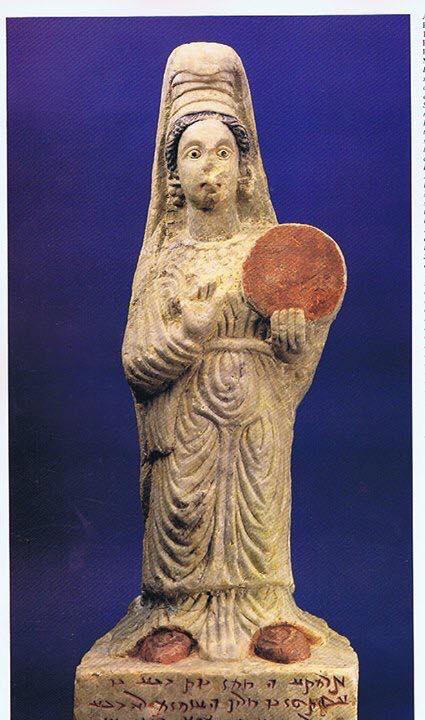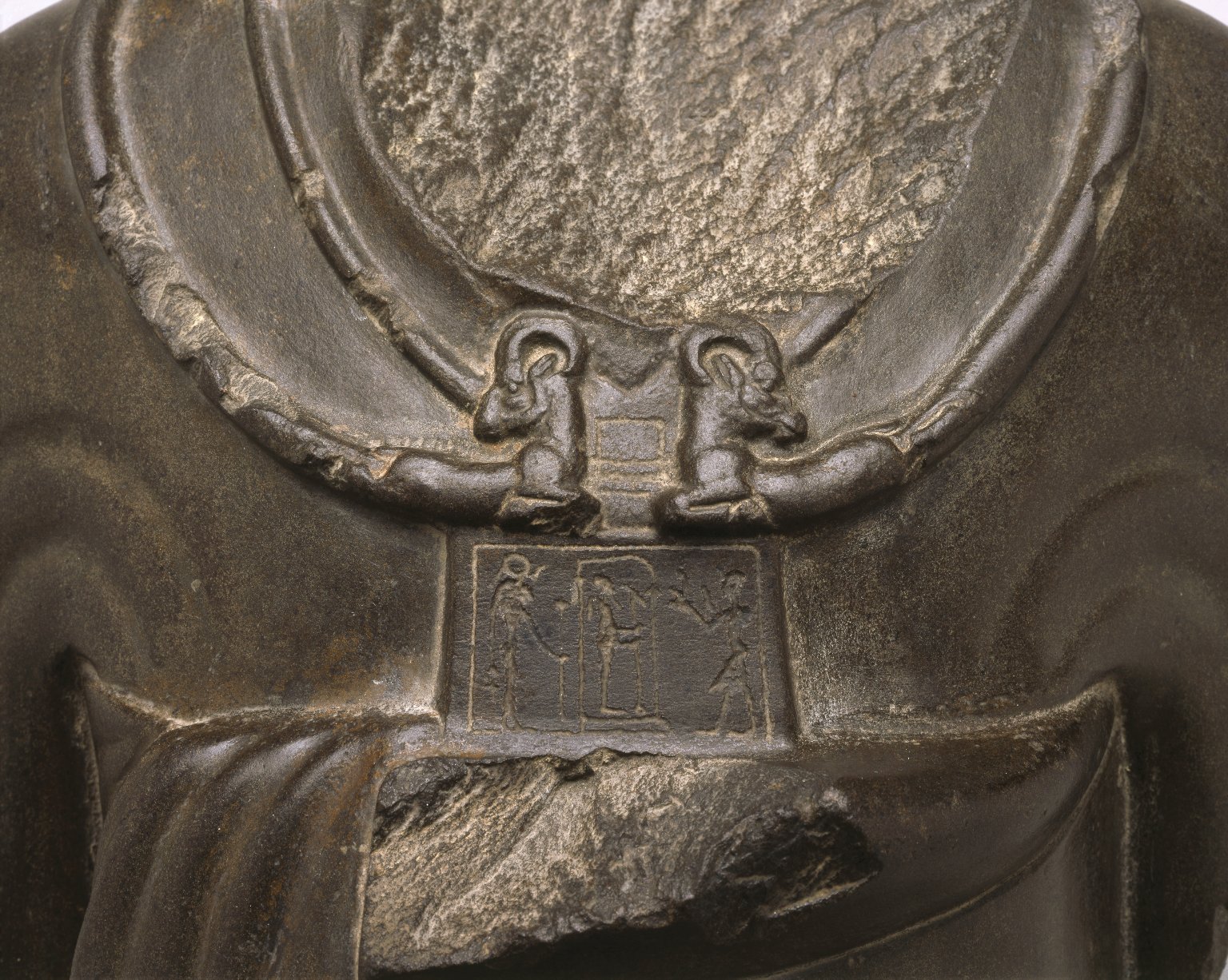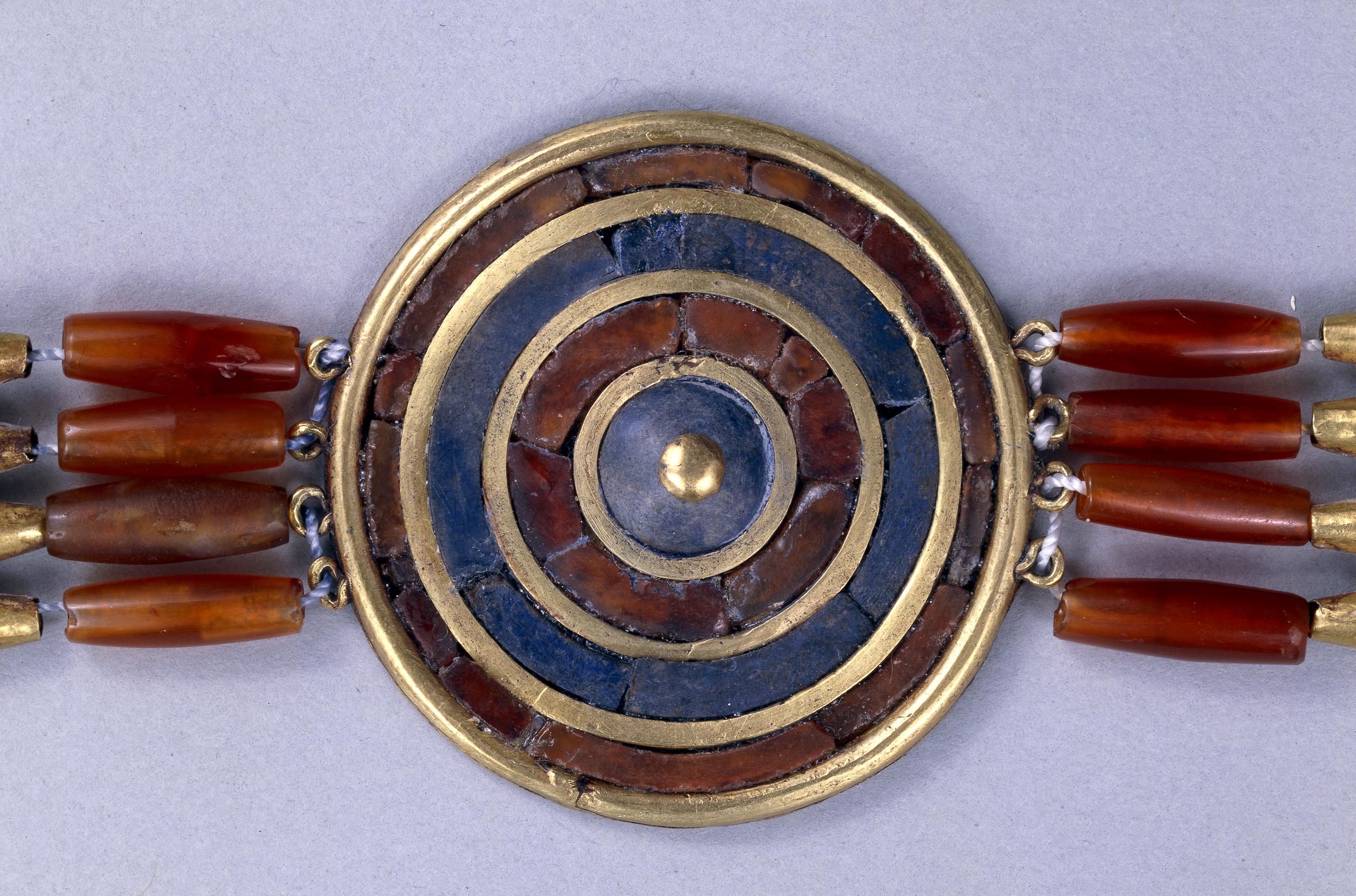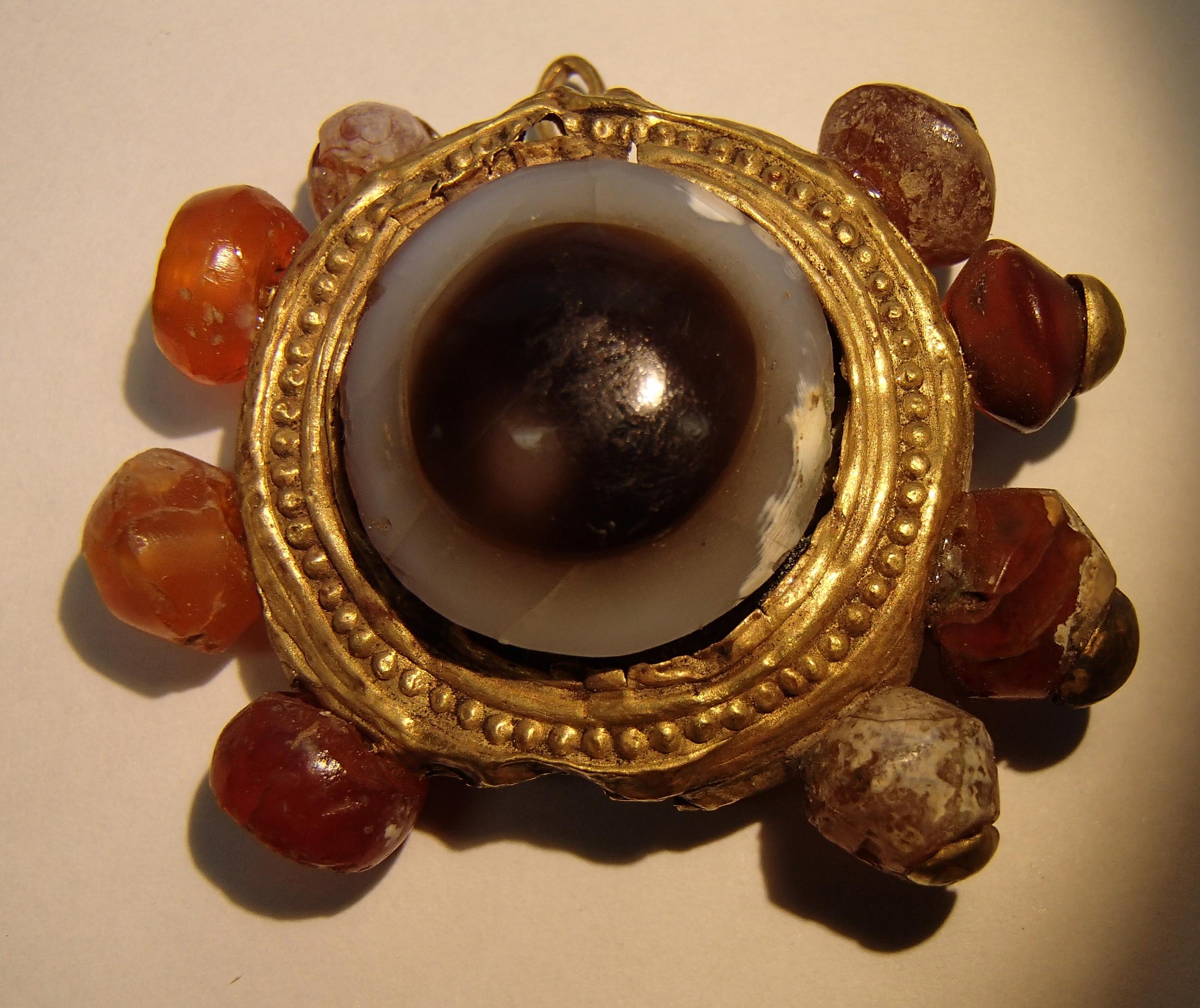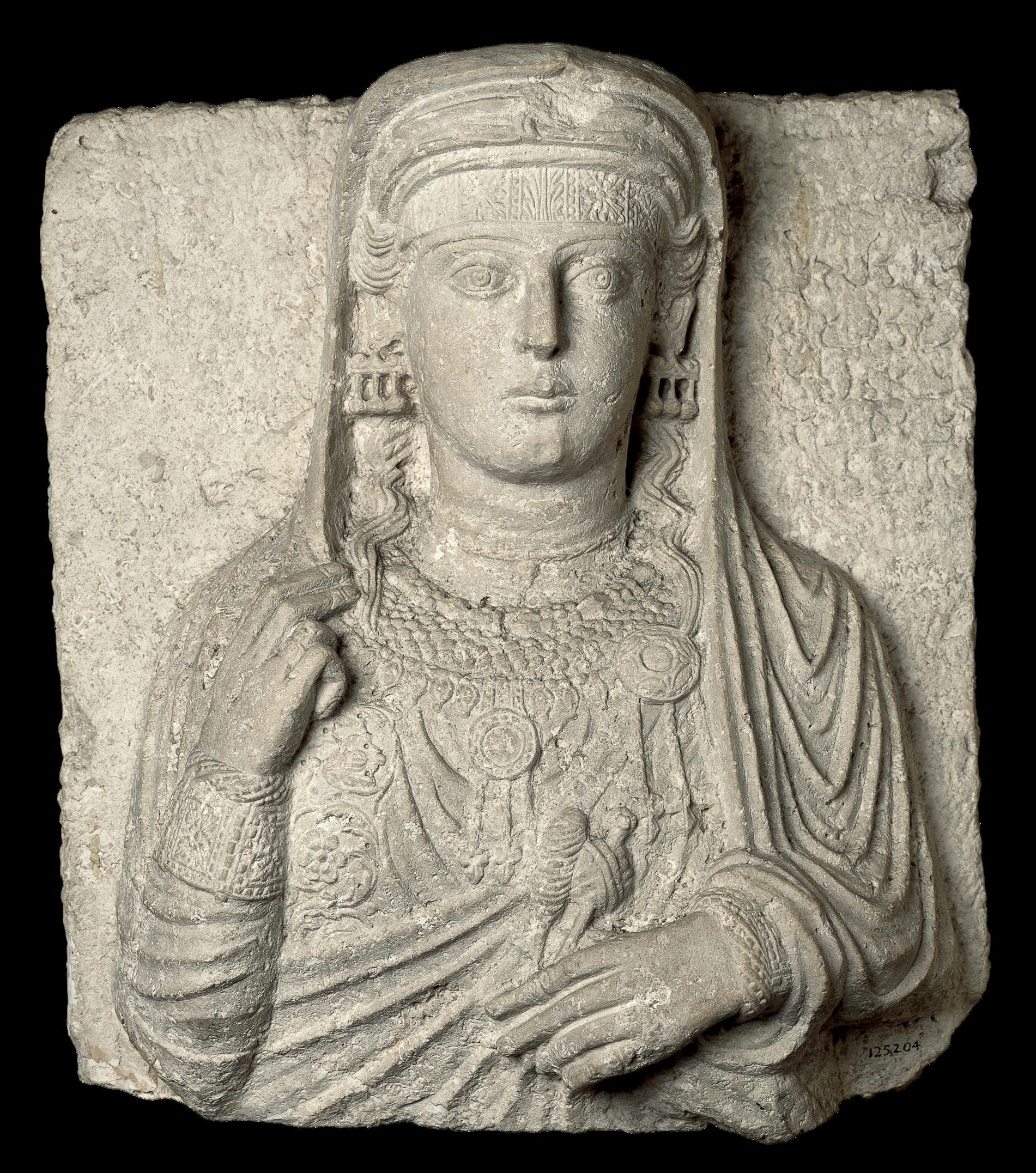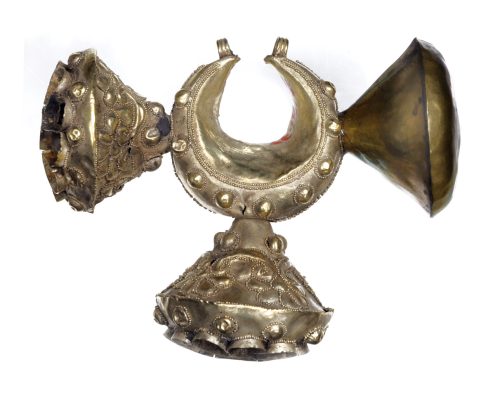
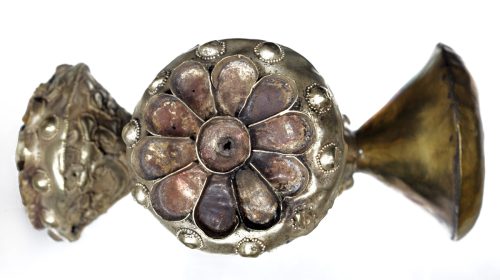
Earring, electron (gold-silver alloy), total: height: 5.8 cm; diameter: 3.2 cm (arms); weight: 15 g. 9th-8th century BCE
“The earring consists of a boat-shaped body with radially arranged conical arms. Of the original three attachments only two are preserved (the third was added). While the body was modelled over a core and pressed together at the ends, the arms are formed by rolled up sheet metal funnels and separately produced and welded on end shells. On each of these bases there is a large cell rosette, which was originally probably filled with multicolored pastes. Ornaments, including palmettes, made of capsules and rows of granulation bordered with granulation, decorate the earrings. This piece is probably a Urartian work based on Assyrian models.” description after MKG Hamburg https://sammlungonline.mkg-hamburg.de

the face of an Assyrian eunuch (ca. 710–705 BCE)
© Trustees of the British Museum after Bradley Parker
British Museum 118812
Similar relief is in The Met https://www.metmuseum.org
The bracelets with a rosette motif on the Neo-Assyrian reliefs showing kings and winged gene.
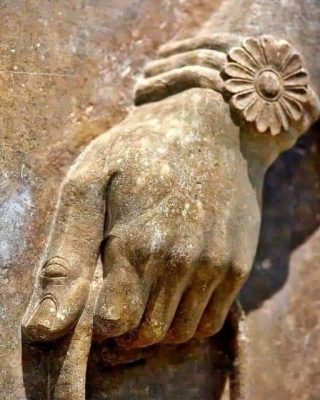
Photo ©Osama Amin

https://www.britishmuseum.org/collection/object/W_1849-0502-2

- Bradley Parker, 2011, The Construction and Performance of Kingship in the Neo-Assyrian Empire https://www.researchgate.net
- John Curtis; An Examination of Late Assyrian Metalwork with Special Reference to Nimrud (Oxford 2013) (with an appendix on scientific analysis by Matthew J. Ponting) https://www.academia.edu
- New Light on Nimrud: Proceedings of the Nimrud Conference 11th-13th March 2002. Edited by J. Curtis, H. McCall, D. Collon and L. al-Gailani Werr. pp. 290. London, British Institute for the Study of Iraq, 2008.
https://www.academia.edu/resource/work/38074670
https://www.academia.edu/resource/work/31006255




